The Barcelona Pavilion is studied in every architecture school as the ideal architectural space. It was quite surreal to visit it in person. It is located at the periphery of the Parc Guell in Barcelona. The location is not so great, in fact and when we were there, it was mostly occupied by homeless people and drunkards. However, it becomes immediately clear why Mies Van der Rohe’s pavilion is so completely idealized by architects everywhere. The pavilion is raised up on a plinth made of travertine. The simplicity of the architecture lies within the spaces, which read more as a horizontal planes that flow into one another than clearly divided spaces.
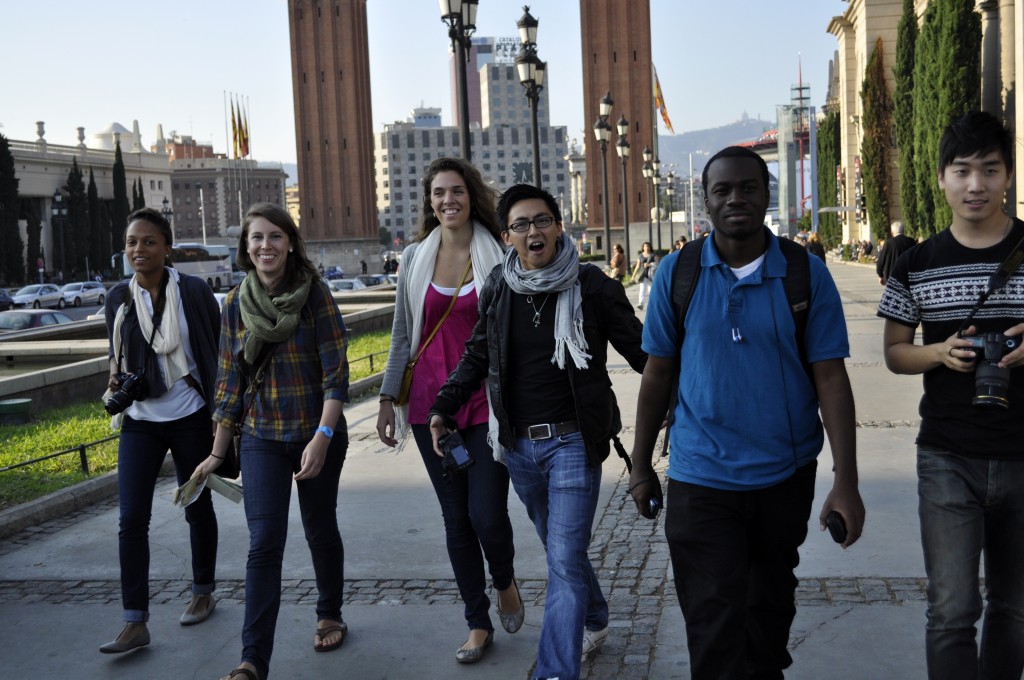
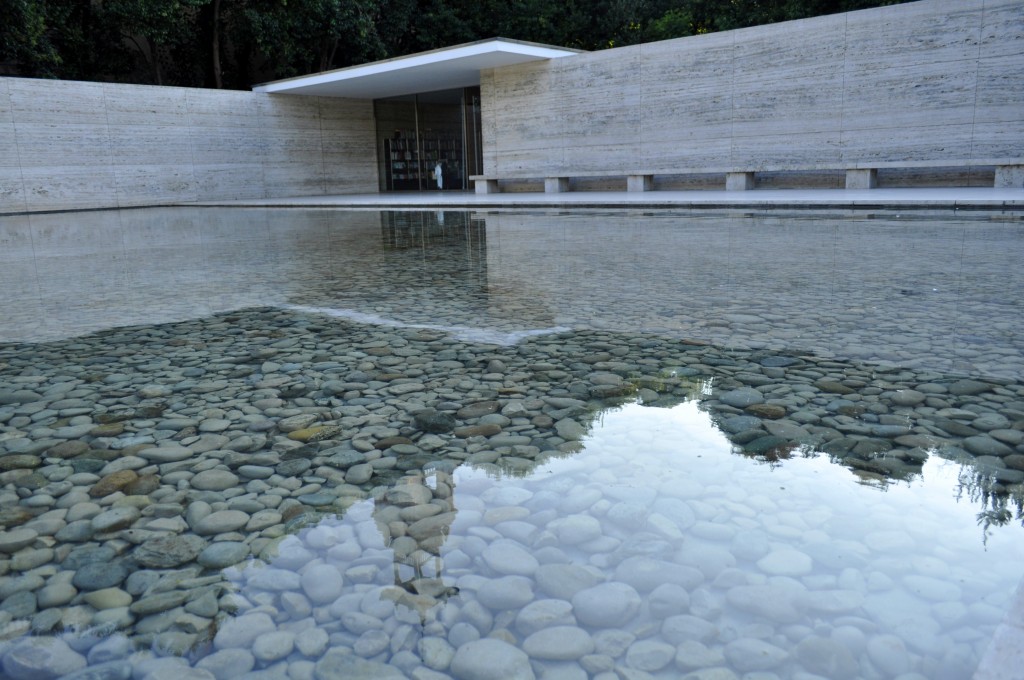
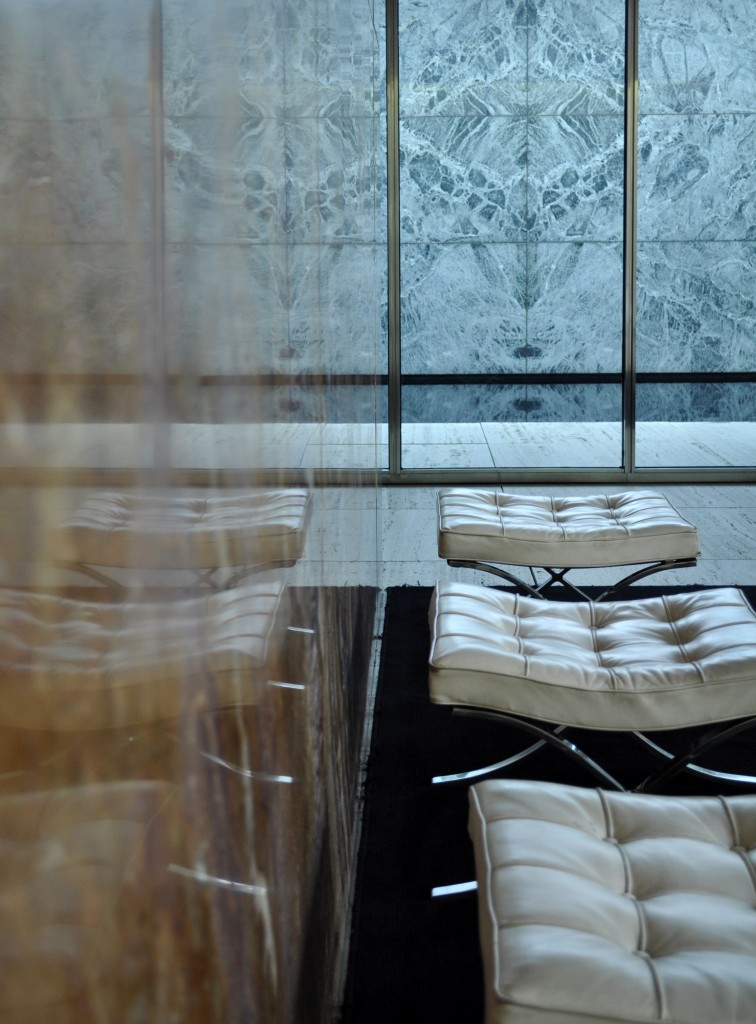
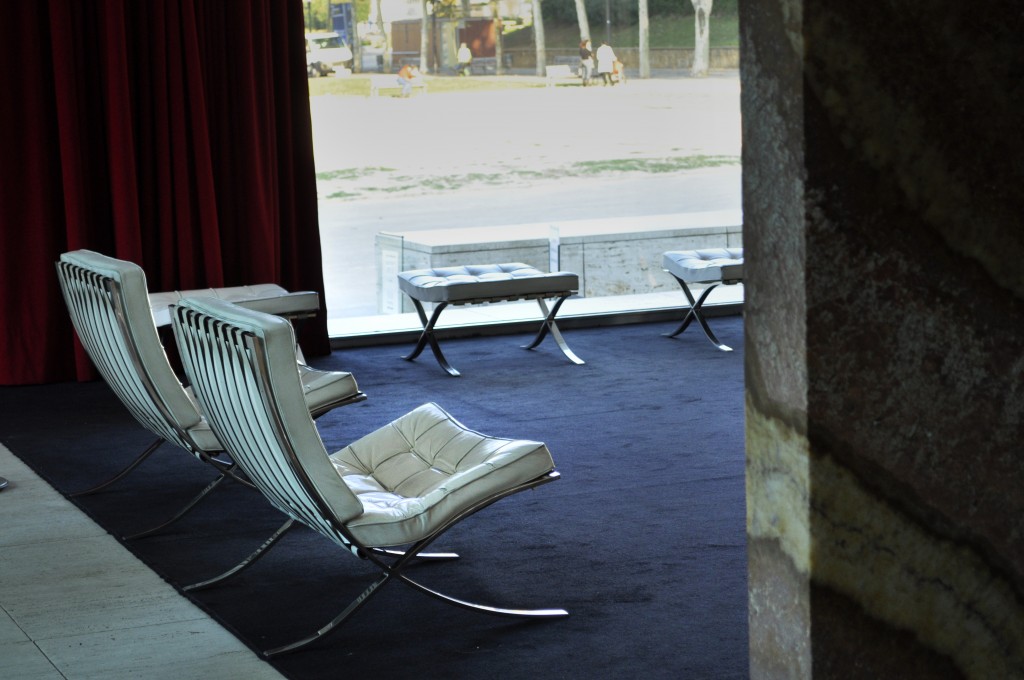
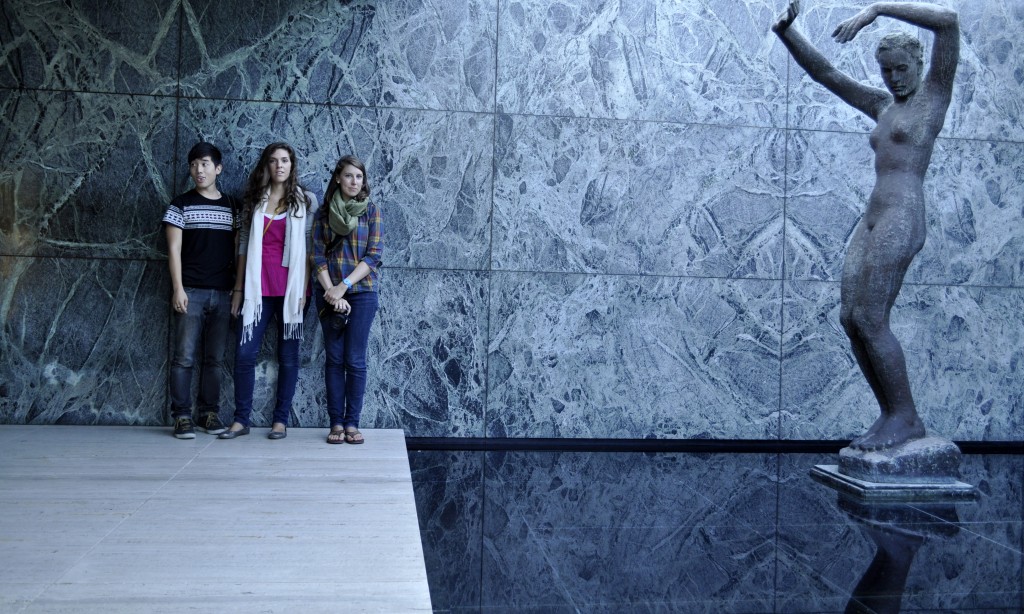
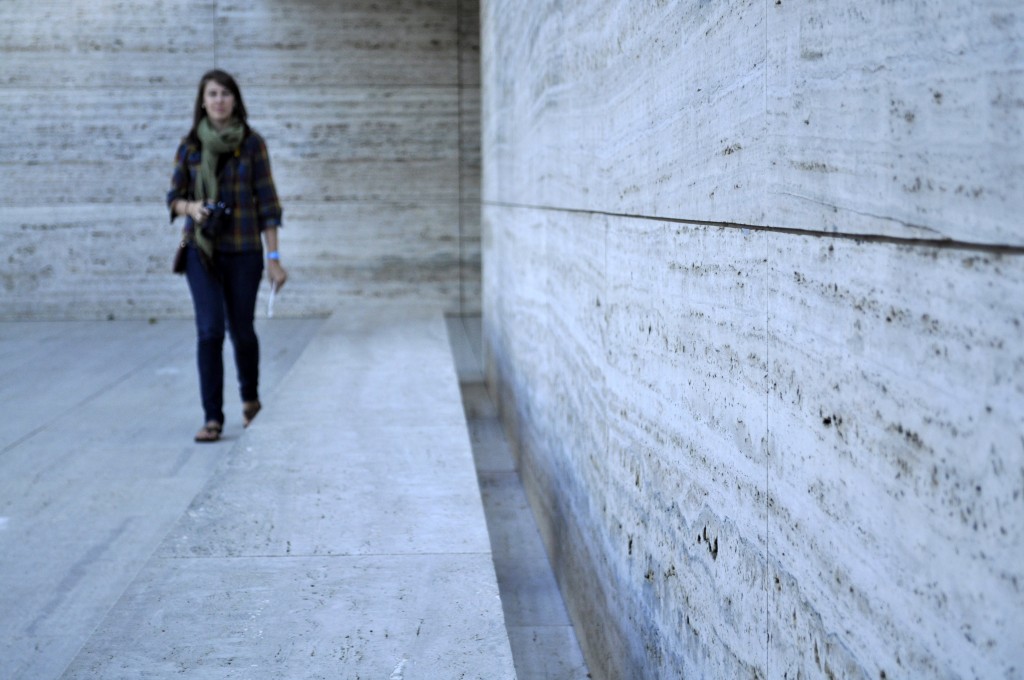
In addition, the use of water, onyx, marble, and various glasses create a playfulness through the use of reflections. The play between the super thin steel columns and masonry walls also creates an interesting dialogue. It seems almost impossible that the pin-thin columns could hold the weight of the roof. The visit to the pavilion was interesting in that it put a personal experience to a work of architecture that I had known so intimately only in my mind and sketchbooks.
